An overall physical and psychological growth necessitates the right amount of nutrients in the form of a balanced diet. Similarly, vitamins and minerals also have their own significance in the existence of the living system.
Vitamins on one side are the organic components that are manufactured within the living bodies of microorganisms, plants, and animals. Whereas minerals being inorganic in nature, are naturally obtained from soil, rocks, water etc.
Vitamins are fragile and susceptible nutrients that are readily harmed with heat, air or chemical exposure. Because of this, it is highly complicated to shuttle the needful vitamins inside the body as they get inactivate very easily while cooking or environmental exposure.
Contrarily, the minerals are indestructible and are not affected by any environmental or chemical factor. Thus, they can easily be obtained from a regular diet.
Both vitamins and minerals are different in structure and nature, yet they are equally important for life functions such as blood cell creation, cell damage healing, bone strength, nerve impulse transmission, reaction catalysis, and so on.
With the use of a comparison chart, types, and instances, we will attempt to summarise the basic comparative points between vitamins and minerals in the following context.
Content: Vitamins Vs Minerals
Comparison Chart
| Basis of Comparison | Vitamins | Minerals |
|---|---|---|
| Meaning | Complex, organic substances that are required in very less amount by the body for the execution of normal cellular activities like growth, enzyme action, cell development etc. | Simple, mostly inorganic materials that play a vital role to carry out various life processes like heartbeat regulation, hormone production, building cellular strength, teeth and bone strengthening etc. |
| Examples | Vitamin A(retinol), Vitamin E(tocopherol), Vitamin D (calcipherol, ergocalciferol), Vitamin K (phylloquinone, menaquinone), Vitamin B2(riboflavin) etc. | Calcium, iron, magnesium, sodium, phosphorous, manganese, zinc, copper, molybdenum, iodine, sulphur etc. |
| Types | On the basis of their solubility: a. Fat-soluble vitamins b. Water-soluble vitamins | On the basis of their requirement in the body: a. Macro- nutrients b. Micro-nutrients |
| Source | They are organic in nature and are generated by living entities including plants, animals and microbes. Example- Vitamin C is formed by orange tree with the help of inorganic components. | They cannot be manufactured inside the living body and are naturally obtained from the soil, rocks and water. Example- Water contains several minerals like sodium, potassium etc in the form of salts. |
| Nutritional importance | All types of vitamins are crucial for a healthy and optimal functioning of a living body. | Not all minerals are essential in the living system. Their need may vary as per the organism, food habits and habitats. |
| Role/Function | • Aid the formation of RBCs by regulating the iron metabolism. • Play part in absorption of phosphorous and calcium in the alimentary tract. • Assist the blood clotting mechanism. | • Required for the optimal functioning of many enzymes. • Aids the transmission of electrical impulses (Na+ and K+ ions). • Are essential components of biological substances like myoglobin, haemoglobin, chlorophyll, cytochromes, etc. |
| Deficiency | The deficiency of vitamins can lead to severe biological diseases like- night blindness, beriberi, rickets, scurvy, etc. | The mineral deficiency causes the health issues like- anaemia, goitre, retarded growth, etc. |
| Susceptibility | They are susceptible to heat treatment, and chemical compounds thus are easily destructible. | They are indestructible as they are not affected by heat exposure or chemical agents. |
What are Vitamins?
The word Vitamin was first coined by Casimir Funk (1912), who was a Polish biochemist. In the early 20s, it was assumed that vitamins comprised of amino acids and thus were named as ‘vitamine’ (vita-life; amine- amino acid). Later, ‘e’ was removed after this assumption was proved wrong.
Definition
“Vitamins are organic substances created inside the body and are required to carry out our regular metabolic activities”.
Characteristics of vitamins
- Our bodies produce these vitamins, but only in small amounts. As a result, they must be replenished in the body through the consumption of food.
- Vitamins have nothing to do with energy production, but they do play a significant part in a variety of other living mechanisms, such as enzyme catalysis, metabolic reactions, and so on.
- A lack of these vitamins can cause a disturbance in the living system, resulting in serious disorders such as rickets, beriberi, night blindness, and scurvy.
- The alphabetisation of vitamins is based on the order in which they were discovered.
Sources and Functions of Vitamins
| Vitamins | Sources | Functions |
|---|---|---|
| Fat-Soluble Vitamins | ||
| Vitamin A (Retinol) | Carrot, papaya, egg yellow, pumpkin, Fish liver-oil etc. | • It combines with rhodopsin to produce rods in retina, thus is important for normal sight in dim light. • It also acts as a hormone. |
| Vitamin D (ergocalciferol, cholecalciferol) | Fish, liver-oil, sunlight on skin, fortified milk, etc. | • Required for the absorption of calcium and phosphorous in the alimentary tract. • Strengthens the teeth and bones. |
| Vitamin E (tocopherol) | Cotton seed oil, wheat, rice, etc. | • Most potent antioxidant • Prohibits growth of unsaturated fatty acid. • Plays part in selenium metabolism. |
| Vitamin K (phylloquinone, menaquinone) | Vegetable oils, wheat bran, leafy vegetables, etc. | • Regulation of blood clotting. • It serves as a cofactor for carboxylase enzyme. |
| Water-Soluble Vitamins | ||
| Niacin (nicotinamide) | Cereals, green vegetables, tryptophan rich foods such as meat, etc. | • Combines with NAD and NADP to form a coenzyme necessary for oxidative metabolism. |
| Vitamin B1 (Thiamine) | Soyabean, dry fruits, bran/husk of cereals, meat, etc. | • Plays role in carbohydrate metabolism. |
| Vitamin B2 (Riboflavin) | Liver, kidney, egg yellow, milk, leafy vegetables, etc. | • Essential for healthy growth of an individual. • Crucial in fat, protein and carbohydrate metabolism. |
| Vitamin B6 (Pyridoxine) | Milk, seeds, grains, liver, egg, green vegetables, etc. | • Significant component of coenzyme pyridoxal phosphate. |
| Vitamin B12 (Cobalamin) | Cheese, fish, liver, egg, meat, etc. | • Serve as coenzyme in the nucleic acid and RBC making reactions. |
| Pantothenic acid | Sugarcane, legumes, cereal grains, kidney, etc. | • Constituent of vitamin A, needed for oxidative metabolism. |
| Vitamin H (Biotin) | Fruits, meats, egg, vegetables, etc. | • Required in the carboxylation catalysis. |
| Folic acid (folacin) | Yeast, green leafy vegetables like spinach etc. | • Play the role of coenzymes in protein synthesis. • Are needed for RBC maturation. |
| Vitamin C (Ascorbic acid) | Citrus fruits such as oranges, lemons, tomatoes, goose berries, etc. | • Regulates the function of fibroblast and osteoblast. • Enhances the collagen formation, helps wound to heal fast. • Plays part in production of RBCs since regulates the iron metabolism. |
Types of vitamins
Although vitamins differ extremely within themselves and are thoroughly heterogeneous, they are classed into two categories based on the most common properties:
- Fat-soluble vitamins
- Water-soluble vitamins
1. Fat-soluble vitamins
All of the fat-soluble vitamins are isoprene derivatives. They are mainly apolar and hydrophobic by nature. Thus, they cannot be dissolved in the water-based body fluid. Since they rely on the fat absorption mechanism for their absorption inside the body, they are termed fat-soluble vitamins.
After absorption, they are transported in the form of chylomicrons to the liver. Vitamins A, D, and K are all stored in the liver, but vitamin E is stored in adipose tissue. Lipoproteins and specialised binding proteins help them travel through the bloodstream.
Note: Fat-soluble vitamins cannot be eliminated from the body through urine and must be discarded through faeces.
Fat-soluble vitamins are:
- Vitamin A
- Vitamin D
- Vitamin E
- Vitamin K
The extreme quantity of these fat-soluble molecules can be toxic for the body; this condition is termed hypervitaminosis.
2. Water-soluble vitamins
These vitamins have polar, hydrophilic, and water-soluble properties. Except for cobalamin, all water-soluble vitamins can be produced by plants. As a result, whole grain cereals, legumes, green vegetables, and yeast have been identified as rich sources of these vitamins.
Milk and meat contain them as well. The body doesn’t store them. They are easily eliminated through urine, as are water-soluble. As a result, they must be supplied on a daily basis through a balanced diet.
Note: Only vitamin B12 is stored in the human liver for several years.
Note: All of the water-soluble enzymes serve as co-enzymes except vitamin C.
Water-soluble vitamins are:
- Vitamin B complex
- Vitamin C
Diseases caused by Vitamin Deficiency
| Vitamins | Deficiency Diseases |
|---|---|
| Fat-Soluble Vitamins | |
| Vitamin A (Retinol) | • Xerophthalmia- inactivation of tear gland, keratinisation of cornea. • Night blindness- loss of vision in dim light. |
| Vitamin D (ergocalciferol, cholecalciferol) | • Rickets- softening or deformation of bones (mainly in children). • Osteomalacia- softening and weakening of bones in adults. |
| Vitamin E (tocopherol) | • Muscular weakness • Creatinuria • Testicular atrophy in rats. |
| Vitamin K (phylloquinone, menaquinone) | • Disruption in the blood clotting mechanism. • This can lead to severe bleeding during injury. |
| Water-Soluble Vitamins | |
| Niacin (nicotinamide) | • Pellagra (3D- dementia, diarrhoea, dermatitis) |
| Vitamin B1 (Thiamine) | • Beriberi (loss of appetite, body ache, fatigue, limb paralysis, oedema, muscular dystrophy) • Warnicke-Korsakoff syndrome |
| Vitamin B2 (Riboflavin) | • Cheilosis (cracks in corners of mouth) • Keratitis (skin inflammation) • Glossitis (inflammation of tongue) |
| Vitamin B6 (Pyridoxine) | • Convulsions • Homocystinuria • Dermatitis • Cystathioninuria |
| Vitamin B12 (Cobalamin) | • Pernicious anaemia (hinderance in erythropoiesis and nerve actions) |
| Pantothenic acid | • Reduced reproductive capacity • Fatigue • Greying of hair • Numbness in limbs |
| Vitamin H (Biotin) | • Muscular pain • Greying or premature fall of hair • Weakness |
| Folic acid (folacin) | • Severe anaemia • Leucopoenia (lack of WBCs) • Ulceration of mouth |
| Vitamin C (Ascorbic acid) | • Scurvy (bleeding and swollen gums) • Weakened immune system |
What are Minerals?
Minerals have a well-defined chemical composition and atomic structure. Minerals are required by living organisms for a variety of actions, although the amount required varies depending on the functions.
Definition
“Minerals are inorganic compounds derived naturally from soil, rocks, or water and are involved in various metabolic events, cell formation and growth, ion balancing, and other processes”.
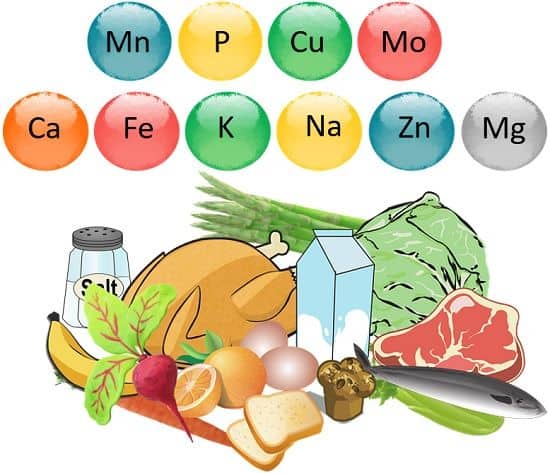
- Macro-nutrients: Minerals that the body needs in huge quantities.
Example: calcium, sulphur, phosphorous, iron, potassium, sulphur etc. - Micronutrients: Minerals that are required in smaller quantities.
Example: cobalt, zinc, boron, copper, manganese, chloride etc.
| Minerals | Biological Importance |
|---|---|
| Calcium (Ca) | • Found in teeth and bones. • Present in exoskeleton of lower organisms. • Constitute as calcium pectate in cell wall. • Required in blood clotting mechanism. • Enhances the permeability of cell. |
| Iron (Fe) | • Major constituent of haemoglobin. • Found in cytochromes. • Iron deficiency can result in severe anaemia. |
| Potassium (K) | • Plays part in the transmission of electrical impulses. • Assist the nerve cell functioning. • Required in blood clot formation. |
| Sodium (Na) | • Maintains the blood pH level. • Plays important part in conduction of nerve impulse. • Controls the amount of fluid inside cell. |
| Sulphur (S) | • Essential element of the amino acids (methionine, cysteine, etc.) • Is also important part of some vitamins and co-enzymes. • Deficiency of sulphur causes the yellowing of the leaves in plants. |
| Manganese (Mn) | • Work as catalyst in many enzyme-based reactions. • Play part in glycoprotein and oligosaccharide synthesis. |
| Magnesium (Mg) | • Major component of chloroplast. • Play role as catalyst for multiple enzymes. • Required for the formation of polyribosome from ribosome. |
| Phosphorous (P) | • Component hard body parts like bone, teeth, etc. • Important constituent of the energy molecules like ADP, ATP, NADP, etc.) |
| Iodine (I) | • Component of thyroxine hormone. • Deficiency of iodine may cause goitre. |
| Copper (Cu) | • Component of plastocyanin (related to photosynthesis). • Acts as catalyst. • Deficiency cause Wilson's Disease. |
| Zinc (Zn) | • Necessary for many hormones. • Deficiency leads to the retarded growth in plants. |
| Molybdenum (Mo) | • Works as catalyst for nitrogenase enzyme that is necessary for nitrogen cycle. |
Key Differences Between Vitamins and Minerals
- Vitamins are complex inorganic compounds that are produced by living beings. The minerals, on the other hand, are inorganic compounds found in soil, rock, and water.
- Despite the fact that vitamins are produced by the body, they must be supplemented because they are easily eliminated by urine. Minerals, on the other hand, cannot be produced by the body and must be obtained through the diet.
- The vitamins are susceptible to environmental variables like air, water, heat as well as chemical compounds. Thus, the vitamins are difficult to get in the body as they readily deactivate with cooking, moisture exposure etc. Contrarily the minerals are indestructible because they are not hampered by any physical or chemical factor.
- While the human body needs all vitamins to carry out its functions, not all minerals are essential.
- Vitamin deficiency can cause biological disorders such as beriberi, night blindness, scurvy, and rickets. In contrast, a lack of minerals in the body can cause the body to stop performing essential functions such as nerve impulse conduction, blood clotting mechanism dysregulation, photosynthetic reaction inhibition, and plant growth retardation, among others.
- They are classified as fat-soluble or water-soluble based on their solubility in fat or water. Minerals, on the other hand, are classified as micro or macronutrients based on their physiological requirements.
Summary
A person who is healthy is free of sickness, illness, or mental or physical disorders. In order to sustain this state of health, one must focus on the most crucial and only manner of obtaining the required nutrients: a well-balanced diet.
A balanced diet is one that contains all of the necessary dietary components in the appropriate proportions. It consists of the proper amounts of carbs, proteins, fats, vitamins, minerals, and water to meet the body’s energy needs as well as help or carry out various important life activities.
Vitamins and minerals, like all other nutrients, play an important part in our bodies. Their absence or inadequacy may result in serious biological consequences. As a result, they should be consumed in sufficient quantities to meet the body’s requirements.


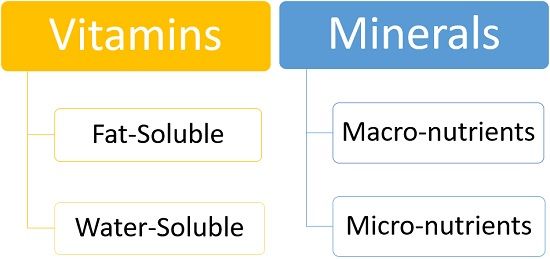
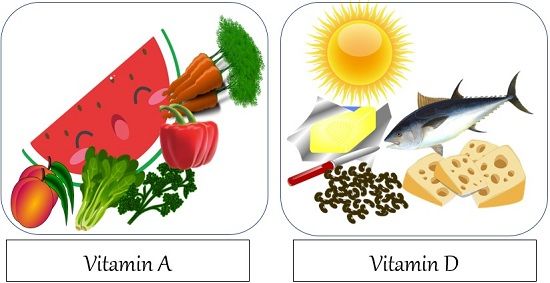
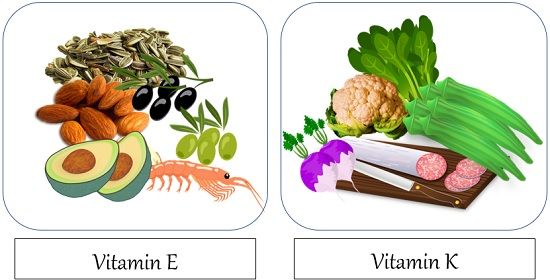
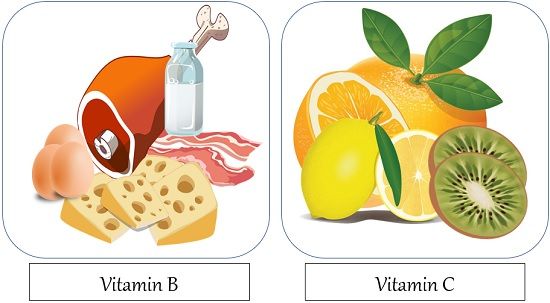
Leave a Reply